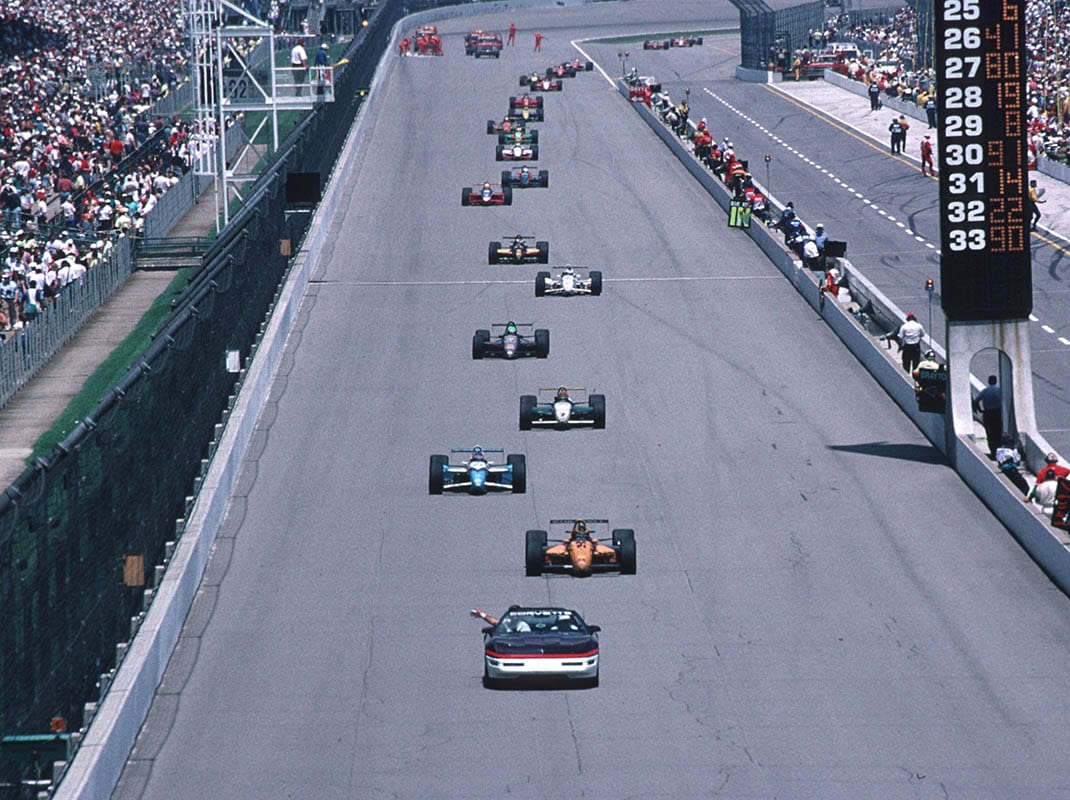From the first race in 1911, dramatic months of May have characterized the Indianapolis 500. Few, however, match the 1995 version for controversy, milestone events and gut-wrenching happenings.
For months, antagonistic debate over Tony George’s Indy Racing League, destined to kick off in 1996, splintered the Indy car community. Two questions divided the sides: Was George’s IRL the way of the future or should the successful CART model be preserved at all costs?
As strained as the relationship between the two sides might’ve been, however, the magnetic pull of May at Indianapolis connected them for a time.
The 500 is a monolithic, iconic event that’s marched forward despite economic downturns, management changes or the manipulative efforts of mere mortals. In May 1995, the coming IRL was far from the sole headline-generating story.
For the first time since 1974, Firestone tires were again at the speedway. Honda, whose engines were embarrassingly uncompetitive in 1994, grabbed a front row starting spot and nearly won the 500. Honda’s driver, a key player in the drama-charged closing laps of the race, secured the ride only weeks before practice began.
Yet another story, however, overshadowed all these. After 10 Indianapolis wins, including the 1994 500, juggernaut Team Penske missed the show.
While that shocked many, the team realized during early spring practice that the new PC24s were lacking. They shrugged it off. They’d make the cars right. After all, they were Team Penske.
As practice days sped toward the first weekend of qualifying, however, Penske drivers Al Unser Jr. and Emerson Fittipaldi were all but invisible on the speed charts. Still, such was Penske’s reputation that even those outside the team considered their struggles a minor stumbling block.
“It’s hard to say why they’re struggling,” mused Paul Tracy, fired by Penske at the end of the 1994 season. “But I’m sure they’ll be there on race day and for qualifying.”
But when the first weekend of qualifying ended, Team Penske remained on the outside looking in.
Although the Penske cars didn’t find speed, others did. To the surprise of no one, Team Menard drivers Arie Luyendyk and Scott Brayton led the charge. Weather conditions slowed them from their near 235-mph practice speeds, but Brayton put his Menard-powered Lola in the top spot, while Luyendyk timed second quick.
“It’s a dream come true,” effused team owner John Menard, who’d reportedly spent upward of $6 million developing his namesake engine. “I’m pinching myself to make sure it’s real.”
Apart from the Penske drivers failing to qualify, the surprise of the weekend was Scott Goodyear’s run for the outside spot on row one. His was an Indy-only deal with Steve Horne’s Tasman Motorsports. Few noticed the unsponsored Honda-powered, Firestone-clad Reynard until Pole Day.
After their dismal 1994 showing, Honda officials were ecstatic. As were the Firestone folks. Goodyear’s surprising speed led to accusations of gumball tires. Firestone’s Al Speyer admitted they brought two tire compounds, one softer than the other. But no “four-lap” tires. Focused development was the key, he insisted.
Focused development did little for Team Penske. Trying to find their way as the final qualifying weekend quickly approached, Unser tested a 1994 Reynard. But after only running in the 218-mph range, he went back to the PC24.
“We won two races before Indy, there’s got to be some reason the cars aren’t working here,” explained Unser. “I want to get back in and work with it.”
Meanwhile, Fittipaldi tested Bobby Rahal’s backup Lola. Rahal was returning a favor. Penske had similarly helped him when he struggled in 1992.
Hampered by rain, it wasn’t until the final practice that Fittipaldi hit 227 mph in the Lola. Unser switched to another Rahal backup car, but couldn’t run a similar lap until late afternoon of the second Saturday of qualifying.
On his first qualifying run, though, he only managed 224 mph. Another attempt later was slower and was waved off. Only one qualifying attempt remained.
Fittipaldi was quicker, but an uncharacteristic blunder prevented him from qualifying. Roger Penske waved off a run that would’ve put Fittipaldi safely in the field. Pressure hampered the normally unflappable Team Penske.
Click below to keep reading.
